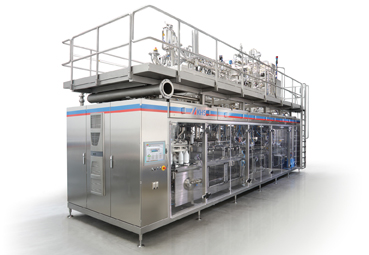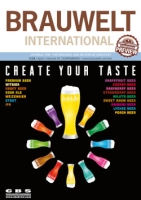With its Innosept Asbofill ABF 611 and Innosept Asbofill ABF 711, KHS launches a new generation of aseptic linear fillers for up to 12,000 plastic bottles per hour. While the standard model, the Innosept Asbofill ABF 611 fills 0.1 to 0.75-liter plastic bottles, the Innosept Asbofill ABF 711 is designed to fill 0.25 to 2.1-liter plastic bottles.
Sidel supplies the first three bottling lines and innovative software for the world’s biggest automated factory. A 66,000 cans per hour canning line, three 144,000 bottles per hour bottling lines, 10 million hectolitres a year, 37 robots: these are only a few of the numbers describing the advanced new plant Grupo Modelo built in Piedras Negras, in Mexico’s Coahuila state near the Texas border.
Beer bottles made of glass represent a product hazard in and of themselves, which from the standpoint of both the glass manufacturer and also the brewery cannot be completely eliminated. Repeatedly, spontaneously exploding beer bottles cause property damage and often result in personal injury. In order to minimize this unavoidable risk, an agreement must be reached between the glass manufacturer and the brewery in the form of a contract specifying the minimum requirements regarding the quality of the glass bottles. When designing glass bottles, one must avoid raised embossing or irregular bottle shapes that can compromise the strength of the glass. This article summarizes the essential requirements and also provides assistance for exercising due diligence regarding this issue; in fact, it is a condensed version of a presentation given at the Second Brewing Science Seminar in Wuhan, China (March 7 – 11, 2011).
Precoat filtration with cellulose fibres
It is the experience of a particular product which appeals to the consumer, according to Rik Olthof of international branding and packaging design consultants Claessens Cartils. He adds: “Branding used to be about information and, more recently, about identification. Nowadays, ‘experience’ is a new dimension that brand owners create with their packaging. It is not the ‘bling’ effect that creates brands, it is the brand’s ability to surprise and inspire, underline the consumer’s identity, and create an emotional atmosphere that is worth sharing”. Innovative
KHS has introduced a new keg washing and racking machine that cleans kegs inside and out, racks them, and has integrated into its cladding up to five media tanks, all controls, and the infeed and discharge conveyors. The Innokeg Till CombiKeg has been designed so that it fits into one container and is supplied ready for action as a Plug & Produce machine, resulting in less time required for installation and commissioning.
The HotFill+ system developed by KHS GmbH enables hot filling of sensitive products into PET bottles avoiding vacuum compensation panels. The idea behind this innovation came from Rajendra Gursahaney, Senior Director of Engineering, Pepsi Beverages Company.
The introduction of the TFS candle filter (Twin Flow System) in the spring of 2002, marked a significant advance in terms of precoating filtration’s equipment design and process engineering. Since then, more than 100 TFS filter systems have gone into operation worldwide. This article examines the empirical feedback obtained for the TFS filter system from both a technological and cost-efficiency viewpoint. The capital investment pays for itself within two to three years, thanks to the savings achieved in processing materials, water and energy compared to conventional precoating filters. With the TFS system, state-of-the-art precoating filtration is technologically future-compatible, in that it can be changed over at any time quite simply to alternative filtering aids like regenerative pulps or plastic granules.
In 1994 a Bohrer crate washing machine was delivered to Spa Monopole in Belgium. In 2009 the producer of mineral water started looking for a new one. It was quite clear from the beginning that it should be a Bohrer type TW again. Why change a well-proven system?
Heretofore, control of all multilane buffer runs in beverage filling plants has been based on measuring the buffer fill level using tailback switches. This method of control has proven itself, however it has some disadvantages. As a result, a sensor system that enables a new control concept has been developed at the Faculty of Food Packaging Equipment in cooperation with werner nophut GmbH.
In 2005, the R&D department of Comac Group developed new technologies for keg filling. The resulting HS6T keg lines include process plants like CIP systems and flash pasteurizers with nominal outputs up to 500 hl/h and provided with high quality components (APV, Alfa Laval, GEA Tuchenhagen).
Current issue
Most Read
BRAUWELT on tour
Current issue
Most Read
BRAUWELT on tour
-
Hopsteiner
Optimization of kettle hopping prior to dealcoholization
-
Hopsteiner
Excellent digital Service: the Hopsteiner Customer Portal
-
Hopsteiner
Variations in hop aroma depending on crop year
-
Hopsteiner
Playing with tradition: Hopsteiner Hopoils - Type Hoptanical
-
Hopsteiner
Crop and market update & hop crop 2023 estimate



